Thanksgiving Feast Wine Matchup Pack: Nine Picks to Enhance the Food, Reawaken the Appetite and Renew Weary Taste Buds ($299) + New Arrival: Sparkling Burgundy From Young Puligny-Montrachet Vines
A true masterpiece is composed of many elements, and all the details must be in precise balance: The forearm musculature on Michelangelo’s ‘David’ for example—the intake of breath in the nostril of Sanmartino’s ‘Veiled Christ.’ This is as true for a magnificent meal as it is for a sculpture, and any constituent of your Thanksgiving Day spread that’s treated as an afterthought may glare more than the successes.
Naturally, we consider wine to be an indispensable part of this annual meal, not only to reinforce the overall sensory enjoyment, but as a nod to a greater sense of appreciation for things that we, as human beings, get right.
It’s possible to overanalyze your wine choices, of course—many of the other elements of a Thanksgiving feast are as fixed as the solar system. Wine is one factor that is not only less preordained, but can (and should) change with vintages and tastes. Our suggestions for Thanksgiving 2022 are culled from new arrivals and old standbys, and are offered as interval highlights at various stages of the meal. They reflect the balance that all cooks, winemakers and artists strive for in rhythm, emphasis, unity and variety.
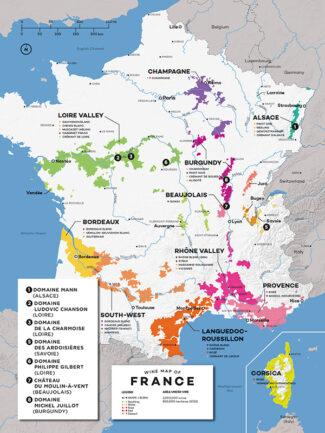
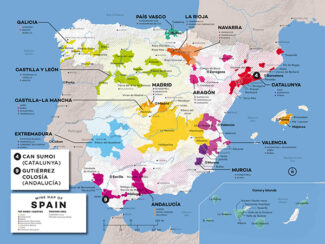
In addition, the regional origins of these wines are diverse, but they all have something in common: They come from countries that don’t celebrate Thanksgiving on the third Thursday of November. As a nod to their culture, we’ve listed a few native dishes that have evolved with the style of wine, with the idea that they might be a way to shake up the status quo of the traditional Thanksgiving menu.
SERVE BEFORE DINNER
When your guests arrive, an icebreaker does not need to contain ice, but the appropriate chill is always appreciated. Red wines, in particular, tend to be served too warm. In this case, the light and perfumed Gamay-based wine from the Marionnet family in Touraine hits its refreshing high water mark around 55°F, somewhat lower than the typical household room temperature. Likewise, the tendency is to transfer white wine directly from refrigerator to glass, which is too cold to appreciate the nuance of an Alsatian Riesling. Give it ten or fifteen minutes to pick up some ambient room warmth—it will show much better.
1 – WHITE
Domaine Mann ‘Happy Lemon’, 2020 Alsace Riesling ($27)
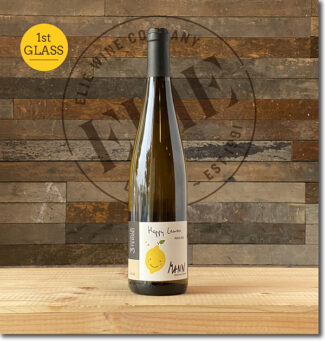 In Alsace, winegrowers claim that it takes a minimum of fifteen years for grape vines to showcase the true potential of their terroir, and in the meantime, most of them bottle young harvests as a blend with juice from older vines. No so with ‘Happy Lemon’, a wine which playfully celebrates the youth of the Riesling from which it’s made. Selection Massale cuttings from prized vines are planted at high density to produce a highly aromatic wine that is fermented on indigenous yeasts and allowed to age on the lees for a year prior to bottling. As the name suggests, citrus notes are the predominate feature of both bouquet and palate.
In Alsace, winegrowers claim that it takes a minimum of fifteen years for grape vines to showcase the true potential of their terroir, and in the meantime, most of them bottle young harvests as a blend with juice from older vines. No so with ‘Happy Lemon’, a wine which playfully celebrates the youth of the Riesling from which it’s made. Selection Massale cuttings from prized vines are planted at high density to produce a highly aromatic wine that is fermented on indigenous yeasts and allowed to age on the lees for a year prior to bottling. As the name suggests, citrus notes are the predominate feature of both bouquet and palate.
The wine would pair marvelously with Truite au Bleu, an Alsatian dish in which, prior to being poached, a fresh trout first soaks in vinegar, turning the natural exterior of the fish blue.
*click on image for more info
Domaine Mann (Alsace)
After stints in Côte-Rôtie and Champagne, where he learned the value of biodynamics from Bertrand Gautherot, Sébastien Mann has been making wine at the family estate since 2009, taking over from his father. He says, “I think that thanks to biodynamics, we have succeeded in bringing an additional element to our vines. My father made wines essentially linked to the earth; I have a much more holistic style, linked to the stars.”
Domaine Mann’s 32 acres were founded upon the theory that in order to produce terroir-driven wines with aging potential, legally allowable yields have to be cut in half. From the outset, the estate produced 35 cuvées, one for each parcel.
“The style of the wines changed very quickly when I came on board,” Sébastien maintains. “95% of the wines we produce now are dry. It was not an easy task, since Alsace is one of the warmest and driest regions in France. Grapes can easily ripen with a high sugar level. I don’t think my father could imagine that with biodynamics we would be able to achieve such a great evolution, achieving phenolic maturity while making dry wines.”
2 – SEMI-DRY WHITE
Ludovic Chanson ‘Les Pêchers’, 2019 Montlouis-sur-Loire White Demi-Sec ($37)
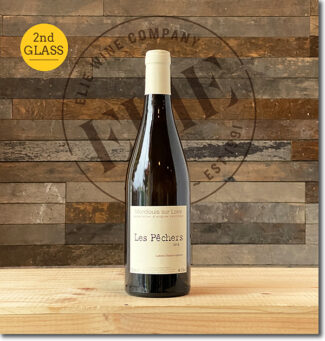 Montlouis-sur-Loire sits on a promontory between the Loire and the Cher rivers. Having specialized in Chenin Blanc for centuries, it produces a wine so unique that when the AOC system developed in the 1940s, it retained its own appellation. There are now about fifty producers.
Montlouis-sur-Loire sits on a promontory between the Loire and the Cher rivers. Having specialized in Chenin Blanc for centuries, it produces a wine so unique that when the AOC system developed in the 1940s, it retained its own appellation. There are now about fifty producers.
During the 2019 harvest, Ludovic Chanson recognized botrytis on the grapes and it was a matter for celebration, like the wine. ‘Noble rot’ lends depth and complex layers of fruit and savory tones to the finished wine, which lists as having 17g residual sugar and 32ppm total SO2. A classic example of semi-dry Chenin blanc.
This wine would be a beautiful foil for a spread of charcuterie, especially andouillette, one of the specialties of nearby Tours.
*click on image for more info
Domaine Ludovic Chanson (Loire)
‘Song’ is an ideal name for this beautiful fifteen acre estate: It means ‘song’. It’s also the surname of the owner, Ludovic Chanson, who took over from retiring winemaker Alex Mathur in 2009. The vineyards lie on the plateau near the village of Husseau, a five-minute drive outside of Montlouis. Most of Chanson’s property is planted in Chenin Blanc; the rest to Chardonnay and Sauvignon Blanc. Soils are clay heavy with a deep limestone base and many of the parcels are littered with silex and flint and the average vine is about 40 years old.
Song trusts his processes and focuses on farming; the estate was converted to organic before Ludovic took over, and he has since achieved certification. Harvesting is done by hand in small baskets, with one pass for the Sauvignon Blanc and Chardonnay and multiple passes for the Chenin Blanc, depending on the cuvée for which the grapes are being picked.
3 – RED
Domaine de la Charmoise ‘First Harvest’, 2021 Touraine ‘natural’ ($24)
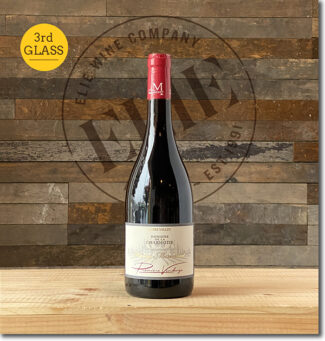 Undergoing a light filtration just prior to bottling, this wine is whole-cluster fermented in cement without sulfur, non-indigenous yeast or pigeage—a French term meaning ‘to punch down the cap.’ When crushed grapes ferment in vats, the skins rise to the surface to create a thick cap that may or may not be punched down; here, the technique is avoided and the result is a wine that is more complex than is typical for a Loire Gamay, largely because without sulfur, the yeasts have a longer time to work and release secondary aromas and flavors. The wine is medium ruby in color with aromas of plum, cherry, dried flowers and spices; dry on the palate with moderate tannin and acidity, and additional notes of grilled meat and forest floor.
Undergoing a light filtration just prior to bottling, this wine is whole-cluster fermented in cement without sulfur, non-indigenous yeast or pigeage—a French term meaning ‘to punch down the cap.’ When crushed grapes ferment in vats, the skins rise to the surface to create a thick cap that may or may not be punched down; here, the technique is avoided and the result is a wine that is more complex than is typical for a Loire Gamay, largely because without sulfur, the yeasts have a longer time to work and release secondary aromas and flavors. The wine is medium ruby in color with aromas of plum, cherry, dried flowers and spices; dry on the palate with moderate tannin and acidity, and additional notes of grilled meat and forest floor.
This would pair well with an iconic Touraine specialty, rillettes of pork spread on a slice of fresh baguette.
*click on image for more info
Domaine de la Charmoise (Touraine-Loire)
Domaine de la Charmoise nestles deep with the forests of La Sologne, home to the great Limousin oak trees that makes the best of French wine barrels. But the Marionnets, who run the domain, both father (Henry) and son (Jean-Sébastien), eschew wood as ‘unnatural’ in their winemaking process.
The family has owned the estate since the mid-19th century and unlike so many of their counterparts in France, they kept control throughout the 20th century and now, well into the 21st. Domaine de la Charmoise’s 150 acres are mostly dedicated to Sauvignon Blanc and Gamay and grow at the highest point between the Loire and Cher rivers, where a combination of situation and geology provides plenty of sunshine and shelter against spring frost. Having recently succeeded his father in managing the estate, Henry’s son Jean-Sébastien has brought his own perspective to Domaine de la Charmoise, expanding the range to include Côt (Malbec) and Chenin Blanc as well as some Loire’s rare varieties. To be sure, however, Henry’s presence is still widely felt, especially in the vineyard.
TOAST
A post-pandemic world has as much to toast as it has to mourn, so take a moment with your guests to toast our survival and perhaps, to commemorate those who were not so fortunate.
France’s ingenious champenoise method and ancestral method make the quintessential toasting wine, but such singular improvements have been made throughout the world of bubbles that now is an ideal time to expand your horizons beyond the familiar world of Chardonnay/Pinot Noir blends. Even Cava, Spain’s answer to Champagne, relies primarily on Parellada, Macabeo and Xarel-lo grapes, but there’s another dimension to Spanish sparklers that takes a different, and exciting, route.
An ideal pairing for high-quality Spanish cured ham, jamón, layered atop a pa-amb-tomàquet—grilled bread rubbed with tomato and drizzled with olive oil, a daily staple at our home.
4 – SPARKLING
Can Sumoi ‘Ancestral Montònega’, 2021 Brut Nature ($27)
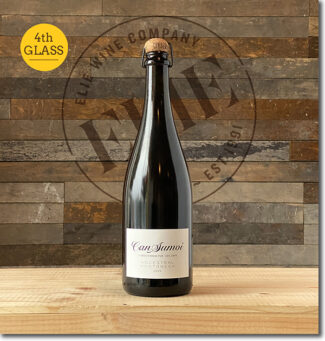 100% Montònega, a pink-skinned clone of Parellada grown in Pla de Manlleu in Penedès, and produces a wine that shimmers with citrus and fennel notes and the Mediterranean herbs that grow along the Catalunyan coast. This beguiling citrus-herb profile is the result of the ancestral method, made without additives, stabilization or filtration.
100% Montònega, a pink-skinned clone of Parellada grown in Pla de Manlleu in Penedès, and produces a wine that shimmers with citrus and fennel notes and the Mediterranean herbs that grow along the Catalunyan coast. This beguiling citrus-herb profile is the result of the ancestral method, made without additives, stabilization or filtration.
*click on image for more info
Can Sumoi (Catalunya, Spain)
At two thousand feet above sea level in the Serra de l’Home mountain range, Can Sumoi is the highest estate in the Penedès; Mallorca and the Ebro Delta are visible from the rooftop of the winery’s 350-year-old farmhouse. Below, vineyards sprawl across limestone-rich soil between stands of oak and white pine, which to the ecology-driven Pepe Raventós, share equal importance with the vines. “Forests,” he says, “protect the biodiversity of the estate; they are the green lungs of the world.”
The wines of Can Sumoi are also green insofar as they are produced using Certified Organic methods; vineyards are tended with natural compost, free of pesticides and with minimal intervention; a herd of sheep and goats is allowed to graze semi-freely among the vines. Certain esoteric biodynamic techniques may sound strange to laymen (such as timing vineyard activity to the phases of the moon) but to Raventós, whose family has lived here for 21 generation, they make perfect sense: “When the moon is ascendant, plant fluids concentrate more towards the roots of plants, and that’s when you want to do the pruning—so you don’t damage the plant.”
SERVE WITH DINNER
When the curtain rises on the main event, cast and crew must be on cue; no more dress rehearsal holidays, this is opening night. And although we’d only recommend diva wines for this important matchup, the fact is that fancy-costume labels should not be a deciding factor when there are plenty of remarkable main-floor wines available for mezzanine prices.
5 – WHITE
Domaine des Ardoisières ‘Argile’, 2020 IGP Vin de Allobroges ‘St-Pierre de Soucy’ White ($36)
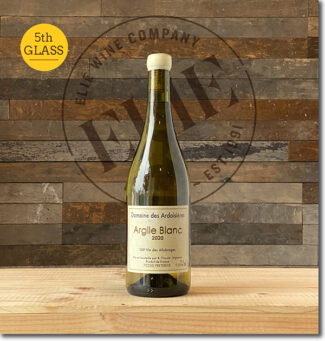 A blend of superstar Chardonnay (40%) and lesser known Jacquère (40%) and Mondeuse Blanc (20%) from Savoie in eastern France, a region in the mountainous areas just south of Lac Léman on the border with Switzerland. Jacquère is a clean, high-acid alpine variety while Mondeuse Blanche, nearing extinction, is found in a small foothold in the Bugey sub-region halfway between Annecy and Lyon. Vines are planted to a mix of shale marl, hard black shale, and clay soil and the wine ferments in a mix of stainless-steel tanks and French oak barriques, then aged in used barrels for about eight months before bottling. The wine shows beautiful weight and tension, with smoke on the nose, ripe citrus on the palate, and salinity on the finish.
A blend of superstar Chardonnay (40%) and lesser known Jacquère (40%) and Mondeuse Blanc (20%) from Savoie in eastern France, a region in the mountainous areas just south of Lac Léman on the border with Switzerland. Jacquère is a clean, high-acid alpine variety while Mondeuse Blanche, nearing extinction, is found in a small foothold in the Bugey sub-region halfway between Annecy and Lyon. Vines are planted to a mix of shale marl, hard black shale, and clay soil and the wine ferments in a mix of stainless-steel tanks and French oak barriques, then aged in used barrels for about eight months before bottling. The wine shows beautiful weight and tension, with smoke on the nose, ripe citrus on the palate, and salinity on the finish.
This would be wonderful alongside Raclette, a Swiss-style cheese that is melted and served with potatoes.
*click on image for more info
Domaine de Ardoisières (Savoie)
To the white clay (Argile Blanc) of Bauges foothills, Brice Ormont brings expertise from his native Champagne. Domaine des Ardoisières was created in 1998 by the iconic grower Michel Grisard; Brice Ormont joined the team in 2005 and took over upon Grisard’s retirement five years later. The vineyard was planted on slopes up to 60% in grade with local grape varieties like Jacquère, Mondeuse, Altesse, and Persan. So steep is the region that Ormont claims that it receives two hours less sunlight per day, an hour in the morning and another in the evening. “You’d think that ripening grapes would be a problem but this is not the case,” Ormont insists. “Seven of our acres face the rising sun in the east and seven more face the setting sun in the west, with the east-facing vineyards reaching incredibly high temperatures of up to 120°F during the day when the sun bounces off the schist rock and magnifies the temperature. During summer the working day stops at 1 pm as working these south-facing slopes in the afternoon is physically impossible.”
6 – ROSÉ
Domaine Philippe Gilbert, 2021 Menetou-Salon Rosé ($30)
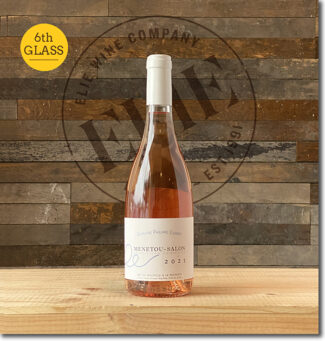 Menetou-Salon is an AOP in the Centre-Val de Loire with vineyards extending over 820 acres and covering 10 communes, including Menetou-Salon itself. Only 3600 bottles of Menetou-Salon Rosé reach American shores each year, so if you can serve it, you are in an exclusive club. 100% Pinot Noir, this wine displays crisp strawberry and raspberry highlights with a bit of smoke and earth on the nose.
Menetou-Salon is an AOP in the Centre-Val de Loire with vineyards extending over 820 acres and covering 10 communes, including Menetou-Salon itself. Only 3600 bottles of Menetou-Salon Rosé reach American shores each year, so if you can serve it, you are in an exclusive club. 100% Pinot Noir, this wine displays crisp strawberry and raspberry highlights with a bit of smoke and earth on the nose.
Such a rose would go nicely with game; wild turkey as opposed to farm-raised would be a great change-up for any Thanksgiving, although more typically Menetou-Salon would be Geline de Touraine, a small black hen that is highly prized in Loire.
*click on image for more info
Domaine Philippe Gilbert (Centre-Loire)
At the helm of Domaine Philippe Gilbert is Phillipe himself, a self-styled ‘dramaturg’ who has written and produced for the stage. Today he is a foremost winemaker, having returned to the village of Faucards in Menetou-Salon to run the family estate, a winery whose history dates back to 1778 and his forefather François Gilbert. His 67 acres, sprinkled across prime sectors of Menetou-Salon, make it one of the most important in the appellation.
The soils beneath the estate are Kimmeridgean, similar to Sancerre and Chablis. With the assistance of his colleague, Jean-Philippe Louis, Philippe Gilbert has plunged headlong into the system of biodynamic viticulture and the domain is now certified as an organic producer.
7 – RED
Château du Moulin-à-Vent, 2019 Moulin-à-Vent ‘Champ de Cour’ ($57)
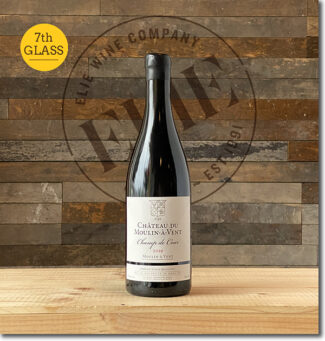 Beaujolais is an always-safe go-to wine with turkey, but it’s even safer if you upgrade from Village-level Beaujolais to Cru, and best of all if you can find a lieu-dit. ‘Champ de Cours’ is a parcel found on a slight slope between the hills of the famous windmill and Fleurie, with an eastern exposure that is fully sheltered from the winds. Granite surface rocks force the roots to dig down deeply to seek their nutrients; clay-rich soil contains five specific minerals that give the wine a unique character. Dominated by explosion of red fruit with roasted pepper and saffron notes, it is a full-bodied wine of considerable elegance with lively tannins and superb length to make it a worthy table-mate for the variety of flavors that your Thanksgiving spread will contain.
Beaujolais is an always-safe go-to wine with turkey, but it’s even safer if you upgrade from Village-level Beaujolais to Cru, and best of all if you can find a lieu-dit. ‘Champ de Cours’ is a parcel found on a slight slope between the hills of the famous windmill and Fleurie, with an eastern exposure that is fully sheltered from the winds. Granite surface rocks force the roots to dig down deeply to seek their nutrients; clay-rich soil contains five specific minerals that give the wine a unique character. Dominated by explosion of red fruit with roasted pepper and saffron notes, it is a full-bodied wine of considerable elegance with lively tannins and superb length to make it a worthy table-mate for the variety of flavors that your Thanksgiving spread will contain.
Frisée with lardons and pomegranate seeds and dried cherries, especially with goat cheese, is a standard salad course in Beaujolais.
*click on image for more info
Château du Moulin-à-Vent (Beaujolais)
At the top of Beaujolais, geographically and (arguably) in terms of quality, Moulin-à-Vent’s oddly toxic soils produce wines of great merit. Manganese exists here in quantities not found anywhere else in Beaujolais; it retards leaf growth and creates smaller bunches, resulting in wines of phenomenal concentration that can be cellared for a decade or more.
In the 18th century Château du Moulin-à-Vent was called Château des Thorins, named for the renowned vines on the hillsides of Thorins. A Mâconnais proverb runs, “Every wine is good with a meal, but a meal cannot be enjoyed without Thorins.” The estate was purchased in 2009 by the Parinet family, who has made a marvelous effort to extract the most from the chemical-rich terroir—the underlying granite soil contains iron oxide, copper and, of course, manganese.
8 – RED
Domaine Michel Juillot, 2020 Burgundy ($30)
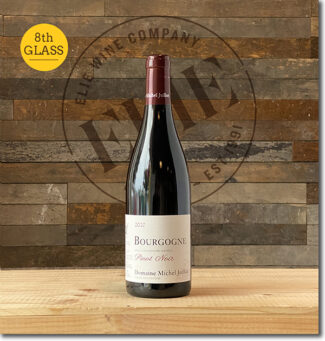 100% Pinot Noir from 26- and 41-year-old vines planted on clay limestone and marl soils. Temperature controlled fermentation is used (and only natural yeasts) in an open top fermenter. Aged 12 months in oak barrels. Ripe aromas of black raspberry, cherry and earth give way to exceptionally rich, suave and solidly dense flavors that are surprisingly powerful in context of what is typical for the appellation.
100% Pinot Noir from 26- and 41-year-old vines planted on clay limestone and marl soils. Temperature controlled fermentation is used (and only natural yeasts) in an open top fermenter. Aged 12 months in oak barrels. Ripe aromas of black raspberry, cherry and earth give way to exceptionally rich, suave and solidly dense flavors that are surprisingly powerful in context of what is typical for the appellation.
Beef from white Charolais cattle would appear on the Burgundian feast table before turkey, but cold ham with fresh parsley—ham parsley—would satisfy a regional inclusion on the side board.
*click on image for more info
Domaine Michel Juillot (Burgundy)
Based in the village of Mercurey in Burgundy’s Côte Chalonnaise, Juillot’s 77 acres roll across a good piece of Burgundy, including plots in the Corton Les Perrières and Corton-Charlemagne Grand Cru climats and six Premier Cru vineyard parcels in Mercurey. Breaking rules in a region where tradition is sacrosanct is a risky venture. Fortunately, shored up by world travels, especially to the new world, Laurent Juillot (founder Michel’s grandson) returned to Burgundy with notions of how to innovate successfully. Among the changes he brought to the domain was a switch to sustainable agriculture while maintaining a regimen of hand-picking fruit and relying on indigenous yeasts. He has excelled in his single-parcel cuvées.
SERVE AFTER DINNER
On Thanksgiving, there are those who consider dessert an entirely separate meal, generally offered after a breather and, in the case of football fans, a nail-biter game. Hedonism is a given, and a sugar blast from confections is as easy as pie or as complex and elaborate as your inner pastry chef can concoct.
Fortunately for the wine decision, Spain offers a wide array of honeyed, nutty, unctuous and wildly satisfying dessert-style wines which stand up to nearly anything you can put in front of them, and work equally well as a stand-alone for sipping.
9 – WHITE DESSERT
Gutiérrez Colosía, Jerez-Xérès-Sherry ‘Pedro Ximénez’ ($37)
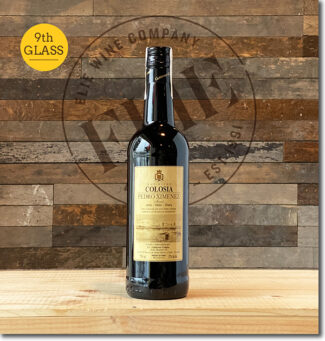 While responsible for perhaps the world’s sweetest wine, Andalusia’s Pedro Ximénez is among the most harmonious on the palate. This is the result of the natural process of ‘raisining’—drying the grapes in the sun—a technique that concentrates the sugars but preserves the natural acidity.
While responsible for perhaps the world’s sweetest wine, Andalusia’s Pedro Ximénez is among the most harmonious on the palate. This is the result of the natural process of ‘raisining’—drying the grapes in the sun—a technique that concentrates the sugars but preserves the natural acidity.
Aged an average of 4 years in solera, the bouquet of Colosía’s example is reminiscent of dried figs and dates accompanied by the aromas of honey, grape syrup, jam and candied fruit, with finishing notes of toasted coffee, dark chocolate, cocoa and licorice.
*click on image for more info
Bodegas Gutiérrez Colosía (Andalucía, Spain)
“In Sanlúcar they talk about being close to the sea, but nobody is closer to the sea than we are.” – Juan Carlos Gutierrez.
Sea air, of course, is critical to the production of sherry, and that is why the official name of Jerez-Xérès-Sherry is restricted for use outside the DO. Gutiérrez Colosía are heirs to a long viticulture and wine producing tradition. Seated in the historic city of El Puerto de Santa María and perched on the banks of Río Guadalete (River of Oblivion), their first Bodega was built in 1838 and it has been preserved almost as such to this day. It was acquired by José Gutiérrez Dosal in the 1920s, and in 1969, and in 1997, Gutiérrez Colosía made the transition from almacenista to bottling their own sherries.
NEW ARRIVAL
Crémant de Bourgogne
Burgundy with Bubbles
Like the vast appellation ‘Bourgogne’, the Appellation Régionale ‘Crémant de Bourgogne’ includes effervescent wines made by the traditional method and includes commues up and down the length of Burgundy. There are, in fact, 300 producing communes in Yonne, the Côte-d’Or and Saône-et-Loire and 85 in the Department of Rhône, spanning more than five thousand acres. Allowable grapes are Pinot Noir, Chardonnay, with the secondary varieties Aligoté, Melon and Sacy permitted in delineated quantities depending on the wine’s color—white or rosé. Terroirs are understandably varied, ranging from the chalky subsoil of Joigny in the north to the granites of southern Burgundy and especially, the limestones and marls of the Côtes where most Crémant de Bourgogne originates.
As part of the strategy by Crémant de Bourgogne producers to boost the quality of the appellation, the Eminent and Grand Eminent denomination were introduced in 2013. These wines must meet a number of specifications, the most important of which is the amount of time they are aged on laths* to bring out the subtle aromas of the varietals. The Crémant de Bourgogne Eminent denomination requires minimum aging of 24 months, while the Crémant de Bourgogne Grand Eminent denomination calls for 36.
* The term ‘aged on laths’ appears frequently in the technical sheets of Crémant and refers to the wooden supports that enable bottles to be piled on their sides after the liqueur de Tirage has been added to the base wine in the bottles to produce secondary fermentation . CO2 is generated and must have a minimum pressure of 3.5 bar. Higher pressures (4-6 bar) make for a finer mousse.
Puligny-Montrachet: The Helen of Troy of Chardonnay
Although as a paradigm, Puligny-Montrachet has been likened to Helen of Troy, in modern times, it might be more appropriate to consider it the Marilyn Monroe of Chardonnay. It is certainly a cultural gold standard and as far as we know, nobody alive ever actually saw the face that launched all those ships. Home to four Grand Cru vineyards and 17 Premier Cru sites, the village was simply Puligny until 1879, when the Montrachet section was added in homage to its iconic Grand Cru vineyard, Le Montrachet.
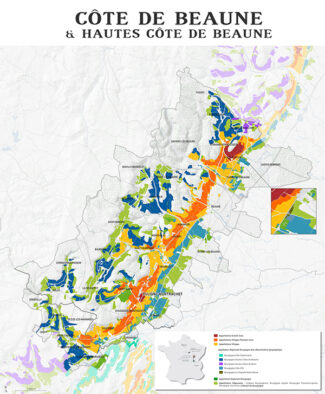
The combination of topography, soil structure and climate heightened by the trial and error of many generations of winemakers has resulted in a detailed map of the area, marking those sites best suited to quality viticulture. A high content of limestone on which the vines grow give these wines a pronounced minerality that is more typical of Puligny’s profile than the more accessible wines of neighboring Chassagne and the more perfumed wines of Meursault.
Domaine Chavy-Chouet
Puligny-Montrachet into Crémant de Bourgogne
Spreading across 37 acres and five communes of the Côte de Beaune—Puligny-Montrachet, Meursault, Saint-Aubin, Volnay and Pommard—Domaine Chavy-Chouet has been family-owned and managed for seven generations, but it was not until Romaric Chavy took the reins in 2014 that the wines reached top-tier status. His youthful appearance is deceiving: Only twenty-two when he took over from his father, he already had a decade’s worth of training under his belt. Starting wine school at 12, he went on to work as an apprentice for his godfather François Mikulski in Meursault, then did stints in South Africa, Spain, Greece and Languedoc.
In part, the wine’s status is due to the age of the vines, which now average more than forty years, but it is undeniably a result of a switch to earth-friendly winemaking. Says Romaric, “Although we do not choose to pursue certification at this point, we are organic and follow the principals of reasoned control. Our regimen is resolutely non-interventionist and includes plowing by horse rather than tractor. After harvest and sorting, the fruit is lightly pressed and allowed to settle; the must is then passes by gravity into tank and is fermented over indigenous yeasts. To maintain purity, there is no batonnage and our wine ages on its lees in Gillet barrels with a maximum of 20% new oak for 9-12 months and is bottled unfined and with only a light filtration if necessary.”
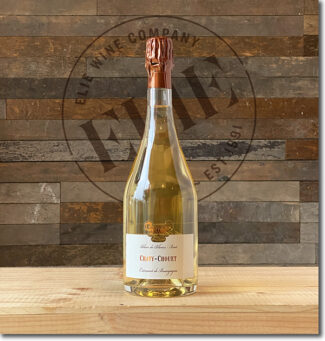 Chavy-Chouet, Crémant de Bourgogne Blanc de Blancs Brut ($33)
Chavy-Chouet, Crémant de Bourgogne Blanc de Blancs Brut ($33)
From a scant acre of young Chardonnay vines (seven years) in Puligny-Montrachet, the wine shows pure, taut Puligny fruit—a yeasty, mineral-driven nose with crisp apple peel and candied lemon gives over to an exquisitely delicate palate with notes of lime, pink grapefruit and white flower blossoms and pave the way to a clean, precise finish with beautiful length.
*click on image for more info
- - -
Posted on 2022.11.11 in Puligny-Montrachet, Montlouis-sur-Loire, Menetou-Salon, Crémant du Bourgogne, Savoie, Côte Chalonnaise, Givry, Moulin-à-Vent, Beaujolais-Villages, France, Beaujolais, Spain DO, Penedes, Burgundy, Wine-Aid Packages, Loire, Sherry/Jerez, Cava, Alsace
Featured Wines
- Notebook: A’Boudt Town
- Saturday Sips Wines
- Saturday Sips Review Club
- The Champagne Society
- Wine-Aid Packages
Wine Regions
Grape Varieties
Aglianico, Albarino, Albarín Blanco, Albarín Tinto, Albillo, Aleatico, Arbanne, Aubun, Barbarossa, barbera, Beaune, Biancu Gentile, bourboulenc, Cabernet Franc, Cabernet Sauvignon, Caino, Caladoc, Calvi, Carcajolu-Neru, Carignan, Chablis, Chardonnay, Chasselas, Clairette, Corvina, Cot, Counoise, Erbamat, Ferrol, Fiano, Frappato, Friulano, Fromenteau, Fumin, Garnacha, Gewurztraminer, Godello, Graciano, Grenache, Grolleau, Groppello, Juan Garcia, Lambrusco, Loureira, Macabeo, Macabou, Malvasia, Malvasia Nera, Marsanne, Marselan, Marzemino, Melon de Bourgogne, Merlot, Mondeuse, Montanaccia, Montepulciano, Morescola, Morescono, Moscatell, Muscadelle, Muscat, Natural, Nero d'Avola, Parellada, Patrimonio, Petit Meslier, Petit Verdot, Pineau d'Aunis, Pinot Auxerrois, Pinot Blanc, Pinot Gris, Pinot Meunier, Pinot Noir, Poulsard, Prieto Picudo, Rondinella, Rousanne, Roussanne, Sangiovese, Sauvignon Blanc, Savignin, Semillon, Souson, Sparkling, Sumoll, Sylvaner, Syrah, Tannat, Tempranillo, Trebbiano, Trebbiano Valtenesi, Treixadura, Trousseau, Ugni Blanc, vaccarèse, Verdicchio, Vermentino, Viognier, Viura, Xarel-loWines & Events by Date
- April 2024
- March 2024
- February 2024
- January 2024
- December 2023
- November 2023
- October 2023
- September 2023
- August 2023
- July 2023
- June 2023
- May 2023
- April 2023
- March 2023
- February 2023
- January 2023
- December 2022
- November 2022
- October 2022
- September 2022
- August 2022
- July 2022
- June 2022
- May 2022
- April 2022
- March 2022
- February 2022
- January 2022
- December 2021
- November 2021
- October 2021
- September 2021
- August 2021
- July 2021
- June 2021
- May 2021
- April 2021
- March 2021
- February 2021
- January 2021
- December 2020
- November 2020
- October 2020
- September 2020
- August 2020
- July 2020
- June 2020
- May 2020
- April 2020
- March 2020
- February 2020
- January 2020
- December 2019
- November 2019
- October 2019
- September 2019
- August 2019
- July 2019
- June 2019
- May 2019
- April 2019
- March 2019
- February 2019
- January 2019
- December 2018
- November 2018
- October 2018
- September 2018
- August 2018
- July 2018
- June 2018
- May 2018
- April 2018
- March 2018
- February 2018
- January 2018
- December 2017
- November 2017
- October 2017
- September 2017
- August 2017
- July 2017
- June 2017
- May 2017
- April 2017
- March 2017
- February 2017
- January 2017
- December 2016
- November 2016
- October 2016
- September 2016
- August 2016
- July 2016
- June 2016
- May 2016
- April 2016
- March 2016
- February 2016
- January 2016
- December 2015
- November 2015
- October 2015
- September 2015
- August 2015
- July 2015
- June 2015
- May 2015
- April 2015
- March 2015
- February 2015
- January 2015
- December 2014
- November 2014
- October 2014
- September 2014
- August 2014
- July 2014
- June 2014
- April 2014
- March 2014
- February 2014
- January 2014
- December 2013
- November 2013
- October 2013
- September 2013
- August 2013
- July 2013
- June 2013
- May 2013
- April 2013
- March 2013
- February 2013
- January 2013
- December 2012
- November 2012
- October 2012
- February 2004
Search



